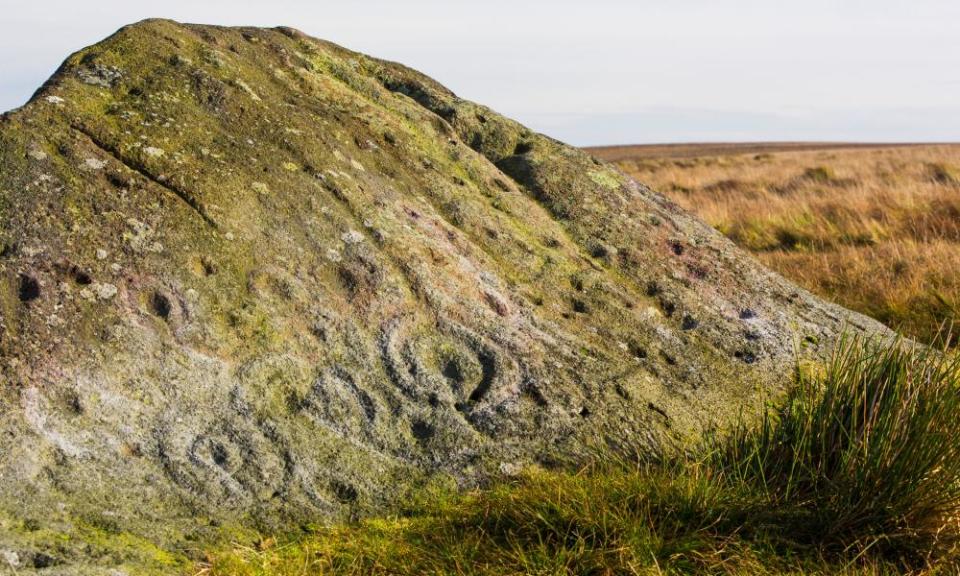Country diary: these rocks are all trying to tell us something

Air races over Ilkley Moor. New rivers leave it as fast as they can, and its trees die young. What endures is rock, and the rocks, it seems, are trying to tell us something. Hundreds of them bear prehistoric “cup-and-ring” marks: circular hollows pecked with tools of harder stone and concentric halos, like Van Gogh stars. The motif recurs so widely in ancient rock art, it’s hard not to conclude that it must represent some universal experience.
Related: Ancient wonders: five little-known archaeological sites in the UK
Much newer to the moor are the Stanza Stones, inscribed in 2012 by the stone artist Pip Hall, with elemental poetry by Simon Armitage. The Beck Stone chocks a steep rush of peaty water; the Puddle Stones are lapped by a pool of reflected sky. Exploring with my son and his two friends, we eat lunch at the Dew Stones, a pair of upright slabs, reciprocally shaped like continents drifting apart. Craving respite from conversations about Lego ninjas, I ask the boys to scan the poem for dry words (parched, tinder, flame), and watery ones (drink, liquid, rain). They conclude that the piece has a hot verse and a cool one, then begin reading it by touch, placing small hands and pink cheeks to the rock.
“Hey!” says Oscar. “This one really is warmer!”
I think they must be imagining, primed by the word game. But it’s true, and now I’m paying more attention, I see the cool stone has more lichen – it must stay damp longer. I wonder if this multisensory subtext, presumably a result of slightly different exposure to wind or solar radiation, is deliberate, and whether such factors might also have influenced the makers of the older marks.
Related: Written in stone: why walkers are finding poetry in West Yorkshire
Armitage’s words, timeless and beautifully chiselled though they be, are already being weathered and overgrown by lichen and moss. They’ll outlast us all right, but compared to the neolithic geoglyphs they are scratchings, their music and subtlety ephemeral.
Descending in fading light, we use the still water collected in one of the “cups” as a mirror, and see our avatars hovering in the clouds. The thought that they might have been meant as messages to us future-lings tugs like the seismic panic I sometimes feel in dreams, stemming from a dim conviction that I’ve forgotten something important.

